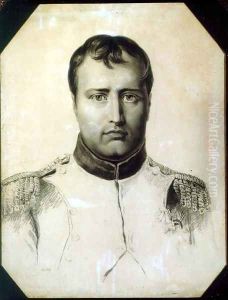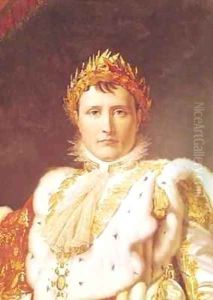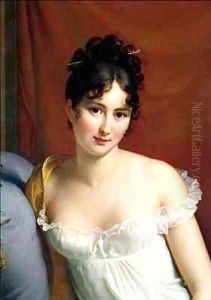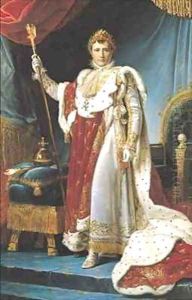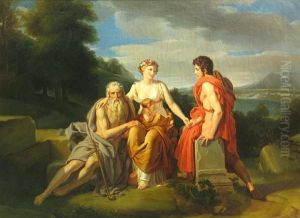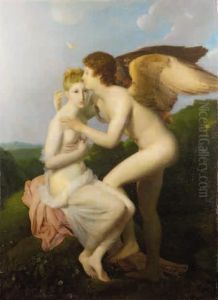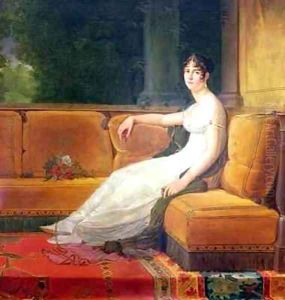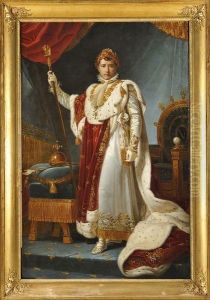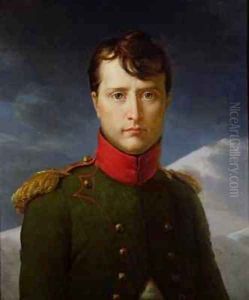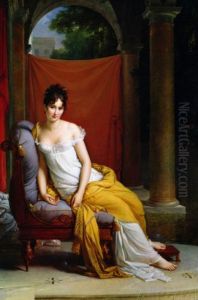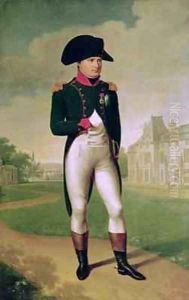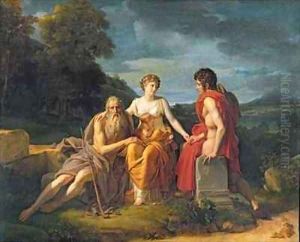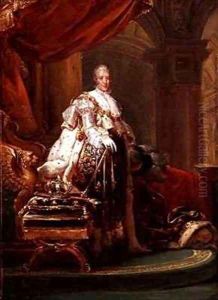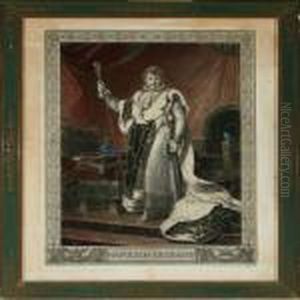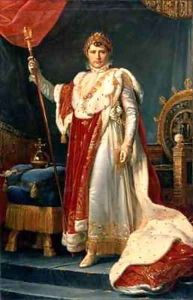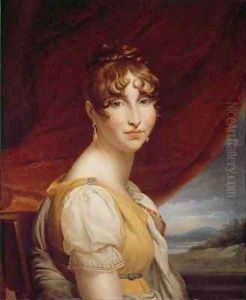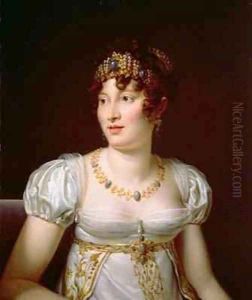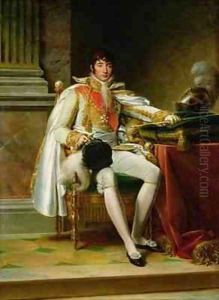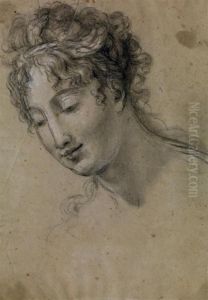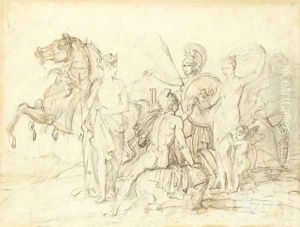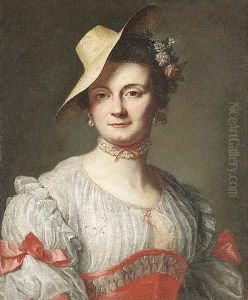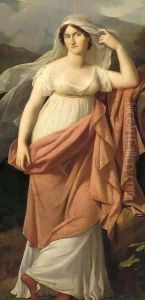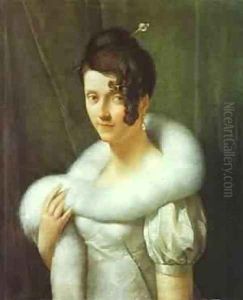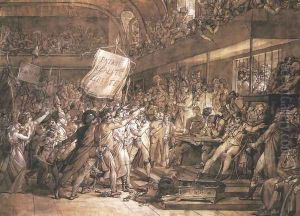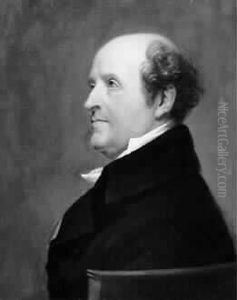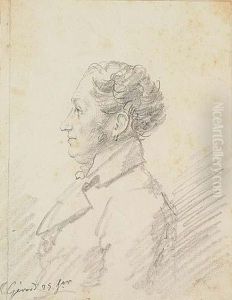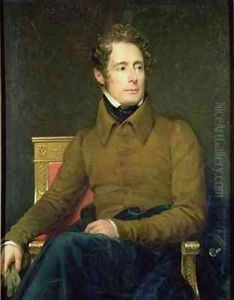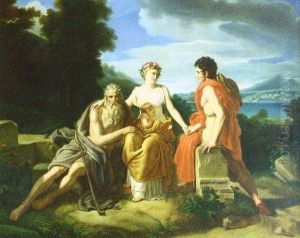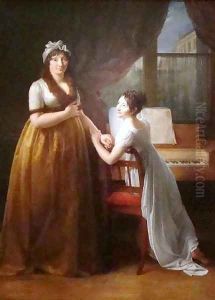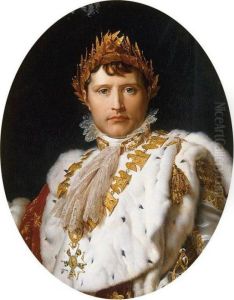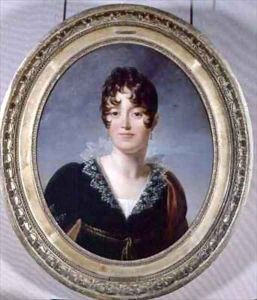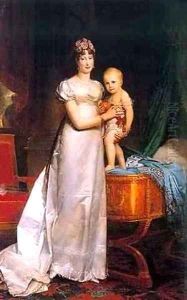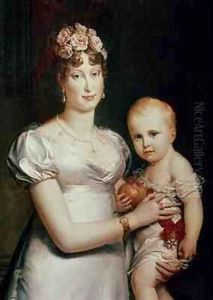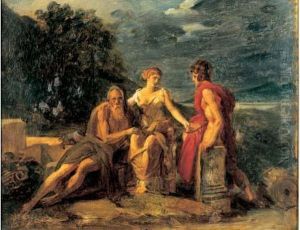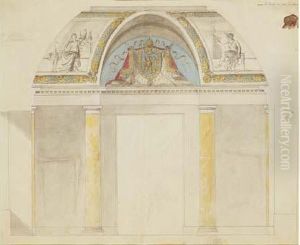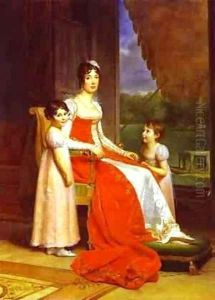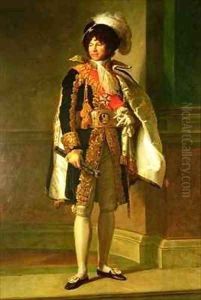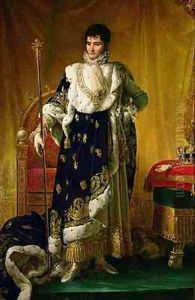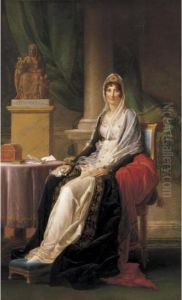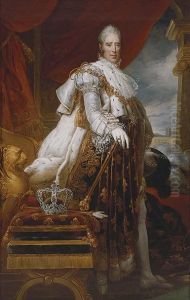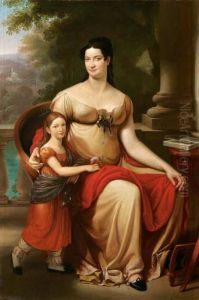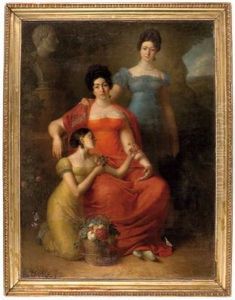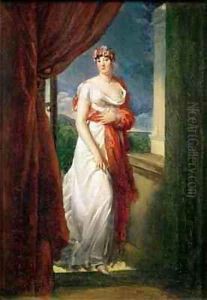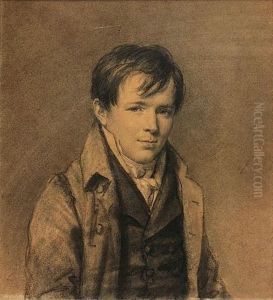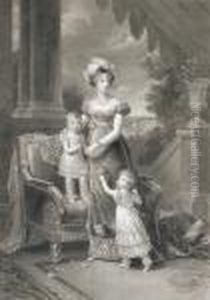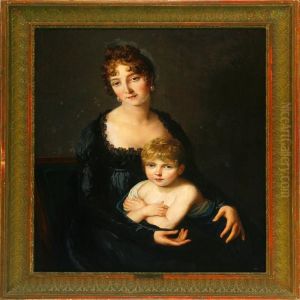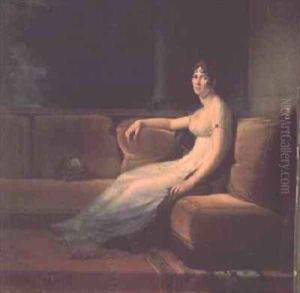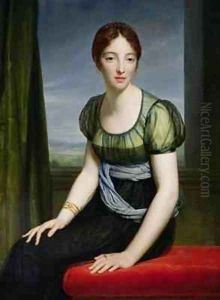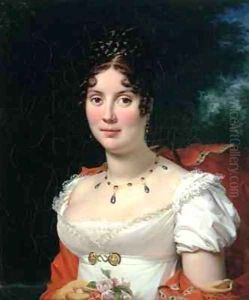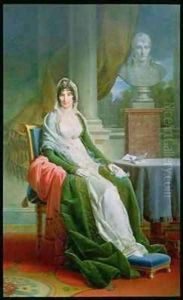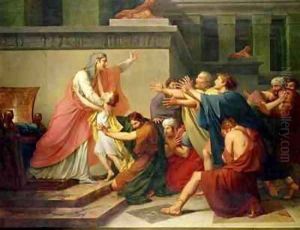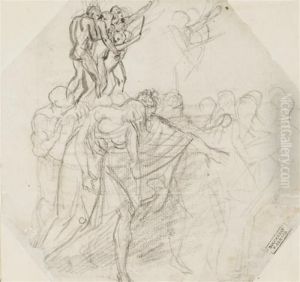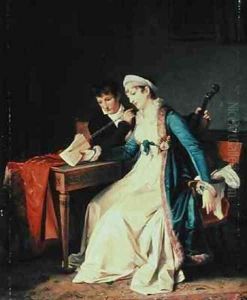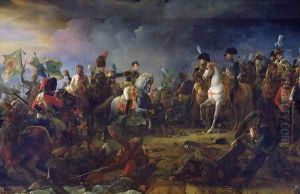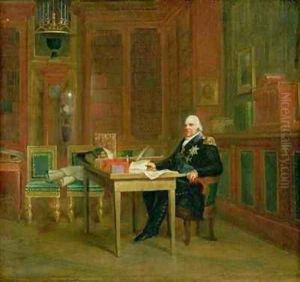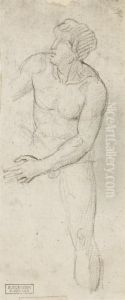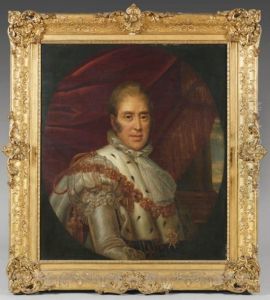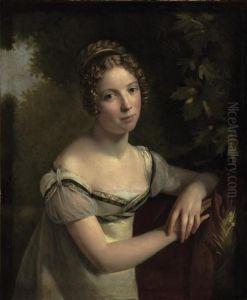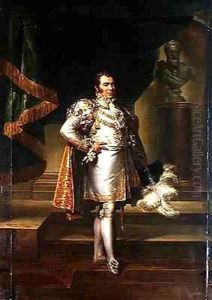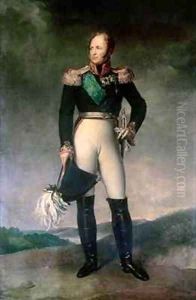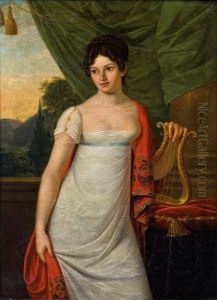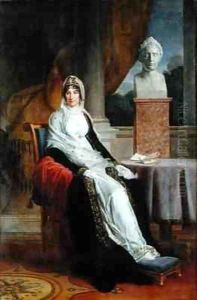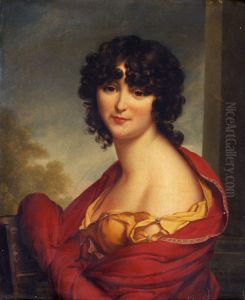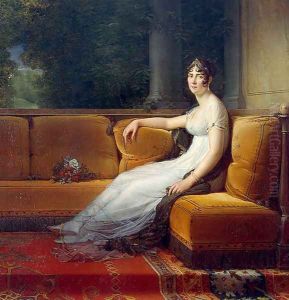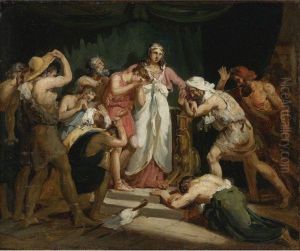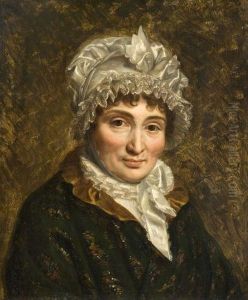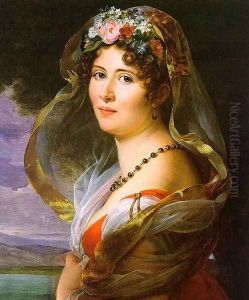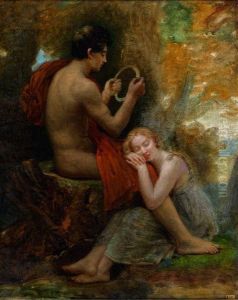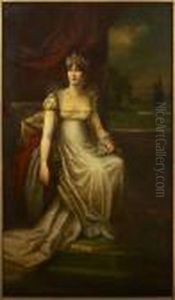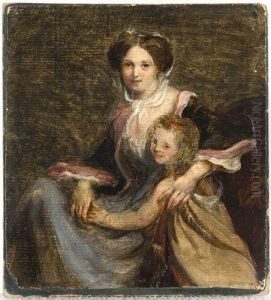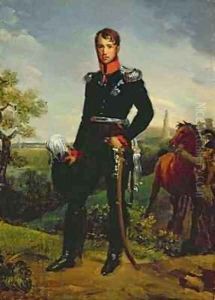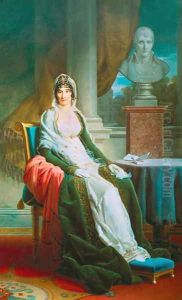Baron Francois Gerard Paintings
Baron François Gérard was a prominent French painter and lithographer during the Neoclassical and Romantic periods. Born on May 4, 1770, in Rome, Italy, to French parents, Gérard moved to Paris with his family when he was just a child. He demonstrated a strong interest in art from an early age and began his formal training under the sculptor Augustin Pajou and later under the painter Jacques-Louis David, who was the leading French artist of the time and a key figure in the Neoclassical movement.
Gérard quickly became one of David's favorite students and developed a style that, while influenced by his teacher, also showcased his own sensitivity and penchant for idealized beauty. His early works were historical and mythological scenes, typical of the Neoclassical taste. He gained recognition with his painting 'Belisarius Begging for Alms' (1795), which reflects his masterful handling of emotion and narrative within the Neoclassical idiom.
During the French Revolution and the Napoleonic era, Gérard's career flourished as he became a favored portraitist of the French court and high society. His portraits were known for their elegance, refinement, and psychological insight. Notable examples include his portraits of Empress Josephine and Napoleon Bonaparte. Gérard's portrait of Madame Récamier, a famous French socialite, is also particularly celebrated and is often cited as a masterpiece of French portraiture.
Apart from portraits, Gérard also executed large-scale historical paintings, such as 'The Entry of Henri IV into Paris' (1817), which depict grand and dramatic moments of French history with a Romantic flair. His style became more Romantic over time, reflecting the shift in artistic tastes during the early 19th century.
Gérard was made a baron by King Louis XVIII in recognition of his artistic achievements. His work was highly influential in his time, and he was admired for his ability to blend Neoclassical precision with Romantic expressiveness. He was also an active participant in the cultural life of Paris and was involved with the Institut de France.
Baron François Gérard died in Paris on January 11, 1837. His legacy includes a body of work that has contributed significantly to the canon of French art, and his portraits, in particular, remain highly esteemed for their representation of the elegance and spirit of his era.
